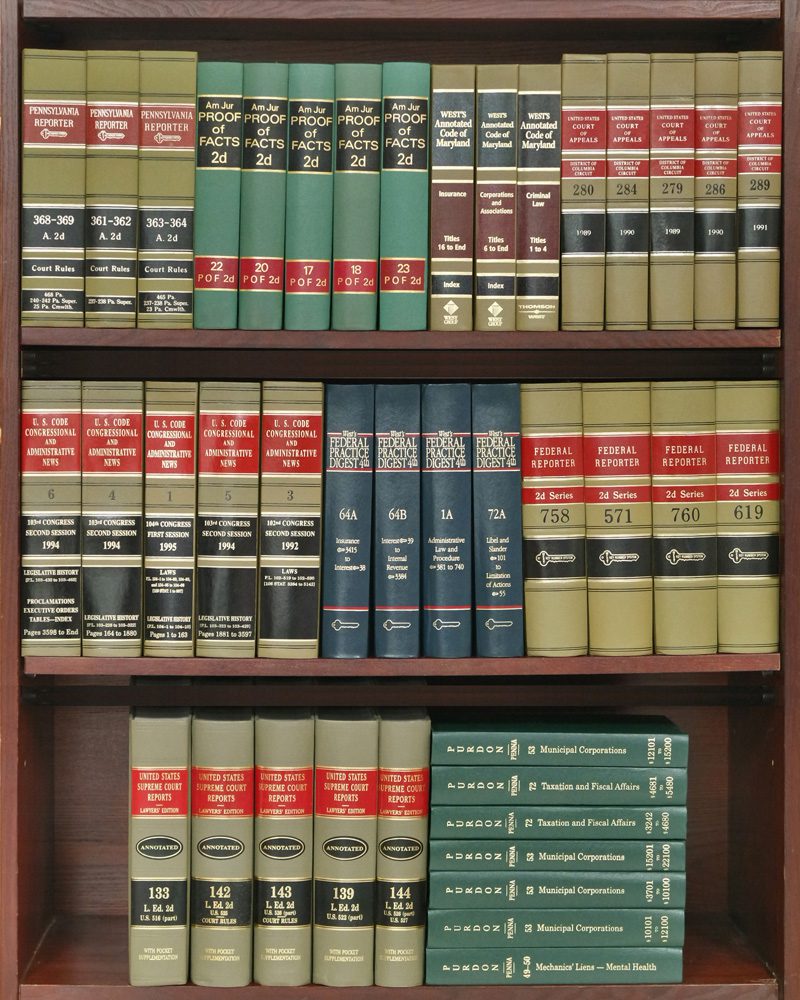Bank of Baroda v. Rukunuddin G Sheikh & Ors.
Bank of Baroda
…Appellant
Rukunuddin G Sheikh & Ors.
…Respondent
Case No: Appeal No. 172/2014
Date of Judgement: 06/10/2023
Judges:
Mr. Justice Ashok Menon, Chairperson
For Appellant: Mr. Nilesh Bamne, i/b M/s. A.R. Bamne & Co., Advocate.
For Respondent: Mr. Puneet Gogad, Mr. Prashant Pandit along with Mr. Jay Pandit, Mr. Rajesh Nagory, i/b M/s. T.N. Tripathi & Co., Advocate.
Download Court Copy CLICK HERE
Facts:
These appeals (No. 172/2014 and 95/2014) impugn an order dated 29/04/2014 in Misc. Application (M.A.) No. 22/2012 filed by Rukunuddin G. Sheikh and Naushad G. Sheikh in Original Application (O.A.) No. 51/1997 before the Debts Recovery Tribunal-I, Ahmedabad (D.R.T.). The order directed the modification of Recovery Certificate No. 683 issued by the D.R.T. and sent it back to the Recovery Officer for execution in the Recovery Proceedings. Appeal No. 95/2014 was filed by the Certificate Holder, Dena Bank (now merged with Bank of Baroda), and Appeal No. 172/2014 was filed by the auction purchaser who had purchased the secured property as the highest bidder. Dena Bank had filed O.A. No. 51/1997 against the late Anilbhai Kantilal Patel and late Kusumben Anilbhai Patel for recovery of debts owed by Abheeneermay Packaging Pvt. Ltd., which the defendants had secured by executing various security documents. On 05/10/1989, Anilbhai created an equitable mortgage over his 1/6 share of a freehold land near V.S. Hospital, Ellisbridge, forming part of Survey Nos. 6 and 7/1 of Mouje, Mandalpur, and part of sub-plot Nos. 2 and 3 of final plot No. 543 of Ellisbridge Town Planning Scheme No. III, admeasuring 637.50 m² together with the building constructed thereon (mortgaged property). The borrowers/mortgagors defaulted on loan payments, and the bank filed O.A. No. 51/1997 for recovery of ₹14,59,108.95 together with interest to be realized from the defendants and the mortgaged securities. The O.A. was allowed, and a Recovery Certificate was issued in favor of the bank. The mortgaged property was attached on 05/08/2003. Anilbhai’s brothers (Suresh Kantilal Patel, Mahesh Kantilal Patel, Hemendra Kantilal Patel, Grish Kantilal Patel, and Romesh Kantilal Patel) filed a third-party objection claiming co-ownership, but it was not pursued. Paramjit Sales and Services Pvt. Ltd. (Appellant in Appeal No. 95/2014) was declared the highest bidder at ₹31 lakhs in the auction held on 03/08/2007. The sale was confirmed, and a sale certificate was issued on 14/09/2007 and registered on 05/06/2009. In July 2006, the mortgagor Anilbhai and his five brothers had divided the property among themselves into six equal shares, after deducting the land acquired by the Ahmedabad Municipal Corporation for road widening. The brothers executed a registered deed No. 12929 on 14/12/2009, assigning their properties to Rukunuddin G. Sheikh and Naushad G. Sheikh (Applicants in M.A. No. 22/2012 and Respondents No. 1 & 2 in the appeals). The brothers of Anilbhai filed civil suits seeking injunctions against the auction purchaser, which were rejected by the City Civil Court on 30/11/2011 and appeals dismissed by the High Court of Gujarat on 13/12/2011. Anilbhai filed a Review Application No. 01/2010 before the D.R.T., challenging the judgment and order dated 07/03/2001, which was dismissed on 14/10/2011. The brothers’ appeals challenging the auction order were dismissed by the Presiding Officer, D.R.T., on 06/12/2012 for non-condonation of delay. Respondents No. 1 & 2 filed civil suits before the City Civil Court, Ahmedabad, seeking declarations and permanent injunctions concerning the auction purchaser’s right over the property, which were rejected on 28/03/2012. Respondents No. 1 & 2 then filed M.A. No. 22/2012 before the D.R.T. under Section 26(2) read with Section 19(25) of the RDDB & FI Act, seeking modification of the Recovery Certificate concerning the extent of the property and necessary directions to the Recovery Officer for executing the Certificate.
Arguments by the Parties:
Arguments by Respondents No. 1 & 2 (Applicants in M.A. No. 22/2012):
The measurements of the mortgaged property were wrongly described in the Recovery Certificate, which came to their notice only when the auction purchaser attempted to encroach upon their property. The co-owners had earlier sold 3042 sq. yards by registered sale deed to Maharana Pratap Centre Owners Association, leaving each co-owner an undivided share of 507 sq. yards. The entire extent of land mortgaged, measuring 636.50 sq. m, is not owned by the original Certified Debtors (Respondents No. 2 to 4). Only an extent of 244 sq. m, along with the construction standing thereon, belonged to the Mortgagors. The auction purchaser was finding it difficult to identify the exact location of the purchased property, and the receiver appointed by the Recovery Officer and a private agency hired by the bank could not succeed in identifying the property. The private agency reported that the mortgagor owns only 244.36 sq. m of land. Unless the modification concerning the measurement of the mortgaged property is made, the Recovery Officer cannot implement the order.
Arguments by the Bank (Appellant):
There is no fault or mistake in the Recovery Certificate issued by the D.R.T., and the application is barred by limitation. The civil suits filed by the co-owners and the Applicants were rejected, and the appeals filed by the co-owners before the Presiding Officer, D.R.T., also failed. While disposing of the O.A., the D.R.T. held that the mortgage was valid and binding upon the mortgagor. The brothers of the mortgagor had colluded with him to thwart the bank’s and the auction purchaser’s claims.
Arguments by the Auction Purchaser (Appellant in Appeal No. 172/2014):
Section 26(2) of the RDB Act provides for the correction of clerical or arithmetical mistakes only, and there is no such mistake in the Recovery Certificate that needs to be corrected. The property was attached in August 2003, and the sale in favor of the Applicants in the M.A. is consequent to the attachment, so they cannot maintain the M.A. under Section 19(25) of the RDB Act.
Court’s Elaborate Opinions:
The Misc. Application was maintainable as the Applicants could not have preferred an appeal challenging the judgment and order in O.A. No. 51/1997. Though the Applicants were aware of the dispute as early as 2010, litigations were pending before the civil court and the High Court. Only when the auction purchaser attempted to take possession of the property purchased by the Applicants did they have a cause of action to challenge the Recovery Certificate under Section 19(25) of the RDDB & FI Act. The deceased third Respondent Anilbhai had rights only over a property measuring 244.36 sq. m, which is one-sixth of the total property belonging to him jointly with his brothers. The mortgagor could not have mortgaged a property over which he had no right or title. The Applicants did not purchase the third Respondent’s share in the property. The brothers of the third Respondent were neither borrowers nor guarantors nor mortgagors, so nothing prevented them from assigning their shares of the properties. Since the Recovery Certificate mentions a larger extent of property over which the Certified Debtor does not have exclusive rights, the Recovery Certificate requires modification. The exact property purchased by the auction purchaser could not be identified. The siblings of the mortgagor are not precluded from entering into a partition document subsequent to the mortgage for dividing the property, as the mortgage was not with their consent. There is no embargo on them selling their share to a third party. Even if an auction purchaser purchases a jointly owned property, they can only get an undivided share of the mortgagor and would have to seek partition to get possession. There is no infirmity in the impugned order modifying the Recovery Certificate, as 244.36 sq. m is the extent of the land to which the mortgagor is entitled, and that alone could have been sold in the auction.
Cases Cited:
Janak Raj vs. Gurdial Singh & Ano. (1967) 2 SCR 77: An auction purchaser is entitled to confirmation of the sale, even if the decree is subsequently set aside or modified, unless the stranger auction purchaser is not protected against the vicissitudes of the suit’s fortunes. Jantha Textiles & Ors vs. Tax Recovery Officer & Ano. (2008) 12 SCC 582: A third-party auction purchaser’s interest in the auction property continues to be protected notwithstanding that the underlying decree is subsequently set aside or otherwise. Gurjoginder Singh vs. Jaswant Kaur & Ano. (1994) 2 SCC 368: The status of a bona fide purchaser in an auction sale in execution of a decree to which they were not a party stands on a distinct footing, as they do not derive their title from either the decree-holder or the judgment debtor, and therefore, restitution may not be granted against them. Sadashiv Prasad Singh vs. Harendar Singh & Ors. (2015) 5 SCC 574: Once the sale is confirmed by the Authority and certain rights have accrued in favor of the auction purchaser, those rights cannot be extinguished except in cases where the purchaser can be assailed on grounds of fraud or collusion. Standard Chartered Bank vs. Dharminder Bhohi & Ors. (2013) 15 SCC 341: The Tribunal’s powers under Section 19(25) of the RDB Act are limited, and the Tribunal does not have any inherent powers. Section 19(25) confers limited powers to give effect to orders, prevent abuse of process, or secure the ends of justice.
Sections and Laws Referred:
Section 26(2) of the Recovery of Debts Due to Banks and Financial Institutions Act, 1993 (RDDB & FI Act): Provides for the correction of clerical or arithmetical mistakes in orders or certificates. Section 19(25) of the RDDB & FI Act: Confers limited powers on the Debts Recovery Tribunal to pass such other orders and give such directions as may be necessary to give effect to its orders, prevent abuse of its process, or secure the ends of justice. Securitisation & Reconstruction of Financial Assets & Enforcement of Security Interest Act, 2002 (SARFAESI Act): Under which the Bank initiated measures against the defaulting borrowers. Order VII Rule 11 of the Code of Civil Procedure (CPC): Regarding the rejection of plaint in civil suits.










